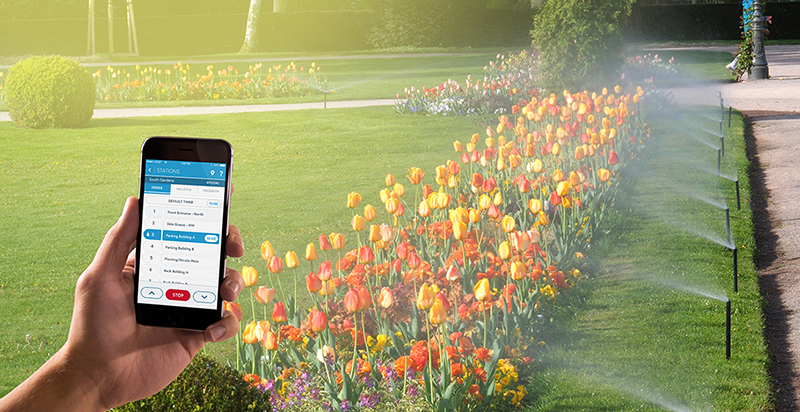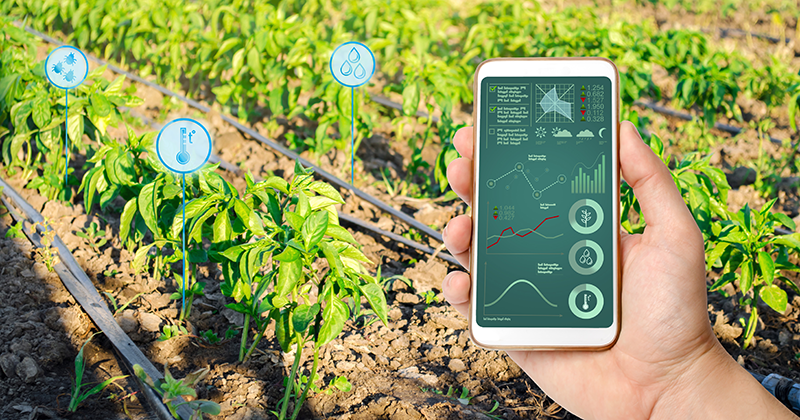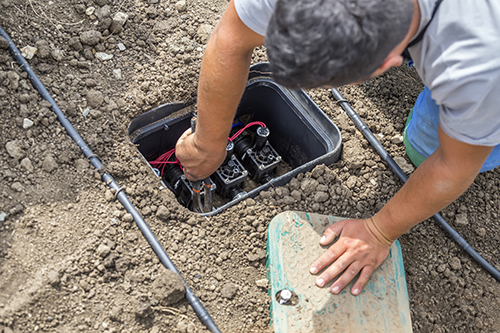0
You have 0 items in your cart
Within the past year, Australia’s wildfires have stripped the country of its natural resources, affecting over a billion animals and scorching 45 million acres of land. And with rainfall already at a record low, conserving water has become critical to farmers now more than ever. With the growing use of technology, the demand for automated irrigation systems is increasing. People all over the country are renewing their focus on water conservation.
Today, educated farmers confront an era of increasingly limited and costly water supplies. The topic of water conservation is gaining more and more attention, as farmers are always faced with various uncertain conditions. Unfortunately, traditional irrigation systems have contributed to much of the water waste. Modern irrigation systems can help maintain the profitability of a farm and improve proper water management practices.
 Unlike traditional irrigation controllers that operate on a preset programmed schedule, a smart irrigation system is a wireless-based adjustment control system. It monitors weather conditions, soil moisture content, evaporation, and plant water use to automatically adjust the watering schedule to the area’s accurate conditions.
Unlike traditional irrigation controllers that operate on a preset programmed schedule, a smart irrigation system is a wireless-based adjustment control system. It monitors weather conditions, soil moisture content, evaporation, and plant water use to automatically adjust the watering schedule to the area’s accurate conditions.
The system allows for external data input — such as weather stations, flow meters, and rain sensors — to provide real-time impacts. This also gives farmers remote access and visibility to water programs via a smart device that can operate anywhere nationally.
Smart systems also include automatic fault detection, which can identify leaks or breakages, reducing water loss and preventing equipment damage. By using the dashboard on your smart device, you can view real-time water usage and system reports.
Experts agree that using a smart irrigation system reduces water usage considerably. Tests conducted by the Irrigation Association (IA) and the International Center for Water Technology at California State University in Fresno indicate that smart irrigation controllers can save anywhere between 20-25% of wasted water.
As a result, substantial water costs are reduced. Controlled studies show that farmers saw a 30-50% decrease in water costs by switching over to a smart irrigation system.
Experts and farmers have spent years investigating and developing a new water-saving initiative. Comparing traditional and modern methods have contributed to the development of smart irrigation systems. But many are still unaware of the considerable differences between conventional and smart irrigation systems.
 In traditional irrigation, more manual labor is required, which ultimately demands more time. Though it may seem less expensive on the surface, it wastes a substantial amount of water and thus costs more money in the long run.
In traditional irrigation, more manual labor is required, which ultimately demands more time. Though it may seem less expensive on the surface, it wastes a substantial amount of water and thus costs more money in the long run.
Traditional irrigation controllers have been proven to waste over two trillion gallons of water every year. According to the Market Research Future analysis, 35% of the world’s population suffers from water scarcity, as 70% of the water is wasted in the irrigation process by traditional irrigation methods.
Using advanced features through smart irrigation systems significantly conserves water using more precise methods, ultimately reducing water usage.
Smart irrigation systems take a more hands-off approach. Not only are they quick to install and easy to use, but they can be adapted into any irrigation system. The system monitors on-site surroundings, measures moisture levels, and adjusts scheduling and run-times accordingly. Automated controllers have improved outdoor water use significantly and encourage remote irrigation for growing farming operations.
Today, more and more farmers are adopting smart irrigation into their agricultural methods.
An experimental program in western Sydney has recently started, delivering a 35% reduction in overall water usage over a three-month period. As a result, this initiative will continue to be implemented across the wider Australian portfolio by installing systems across more than 40 sites by 2021.
Water is a scarce resource in many parts of Australia. Over recent decades, the country has experienced low rainfall, leading to low water storage levels. The growing population is also reinforcing the need to conserve water.
 In addition, the recent wildfires between the 2019/2020 season have also had a devastating impact on the country’s agriculture. Previously successful crops like rice, cotton, and grain sorghum have experienced a significant decline in production. Even dairy farms have been affected. According to a Kleffman Group study, irrigated dairy farms in northern Victoria have been forced to stop production and sell their herds.
In addition, the recent wildfires between the 2019/2020 season have also had a devastating impact on the country’s agriculture. Previously successful crops like rice, cotton, and grain sorghum have experienced a significant decline in production. Even dairy farms have been affected. According to a Kleffman Group study, irrigated dairy farms in northern Victoria have been forced to stop production and sell their herds.
The need for more efficient irrigation systems is a must for the country to survive. With water already experiencing a record low, water conservation awareness has attracted both the government and farmers’ attention.
The agriculture industry is encouraging smart irrigation systems, as the systems help reduce water waste and adapt to the country’s changing weather conditions.
Just this year, smart irrigation systems have already contributed to savings across the board.
Between January and March 2020, smart irrigation systems have been responsible for reducing water usage by 61% (or 19 million liters). As a result, capital costs have been able to save $100,000 associated with plant replacement due to traditional irrigation issues.
Because the system also uses a hands-off approach, costs from human intervention have drastically reduced. Operating expenses have gone down by approximately 3,600 hours nationally.
Even during the COVID-19 crisis, smart irrigation has seen growth. In 2019, smart irrigation’s global market was valued at $961 million and is expected to reach $2.05 Billion by 2025. Further developments in the field of IoT irrigation has led to government-led initiatives to promote water conservation.
Rising investments in the field of agriculture in Australia have had a massive impact on the growth of automated irrigation systems, and the market is expected to grow exponentially by 2023.
In general, smart irrigation systems have led to healthier landscaping and crops. Efficient water methods mean plants and lawns are being watered as and when required. As a whole, the new system has contributed to water conversation, energy savings, soil stability, and cleaner water resources for wildlife.
